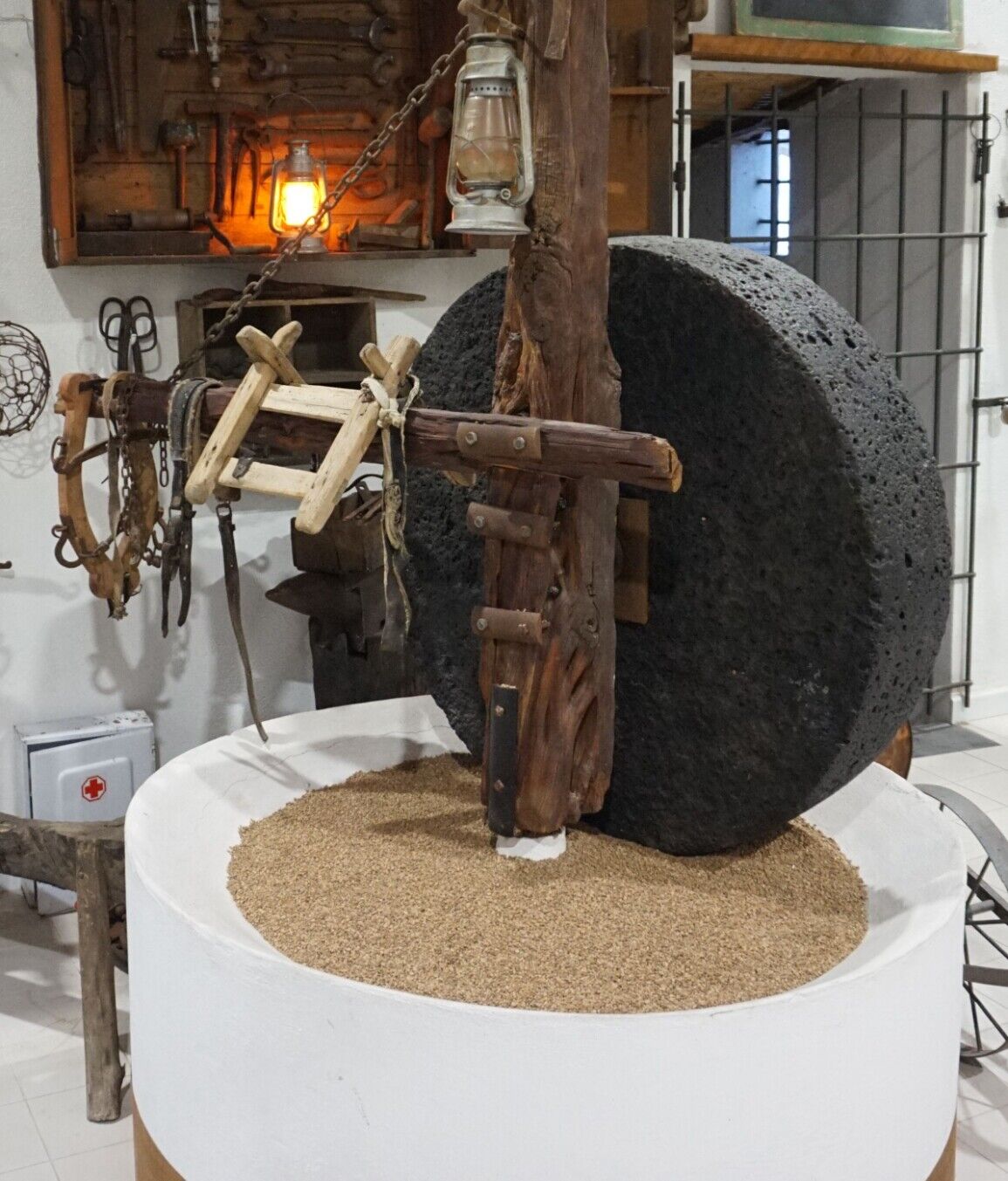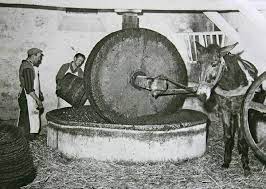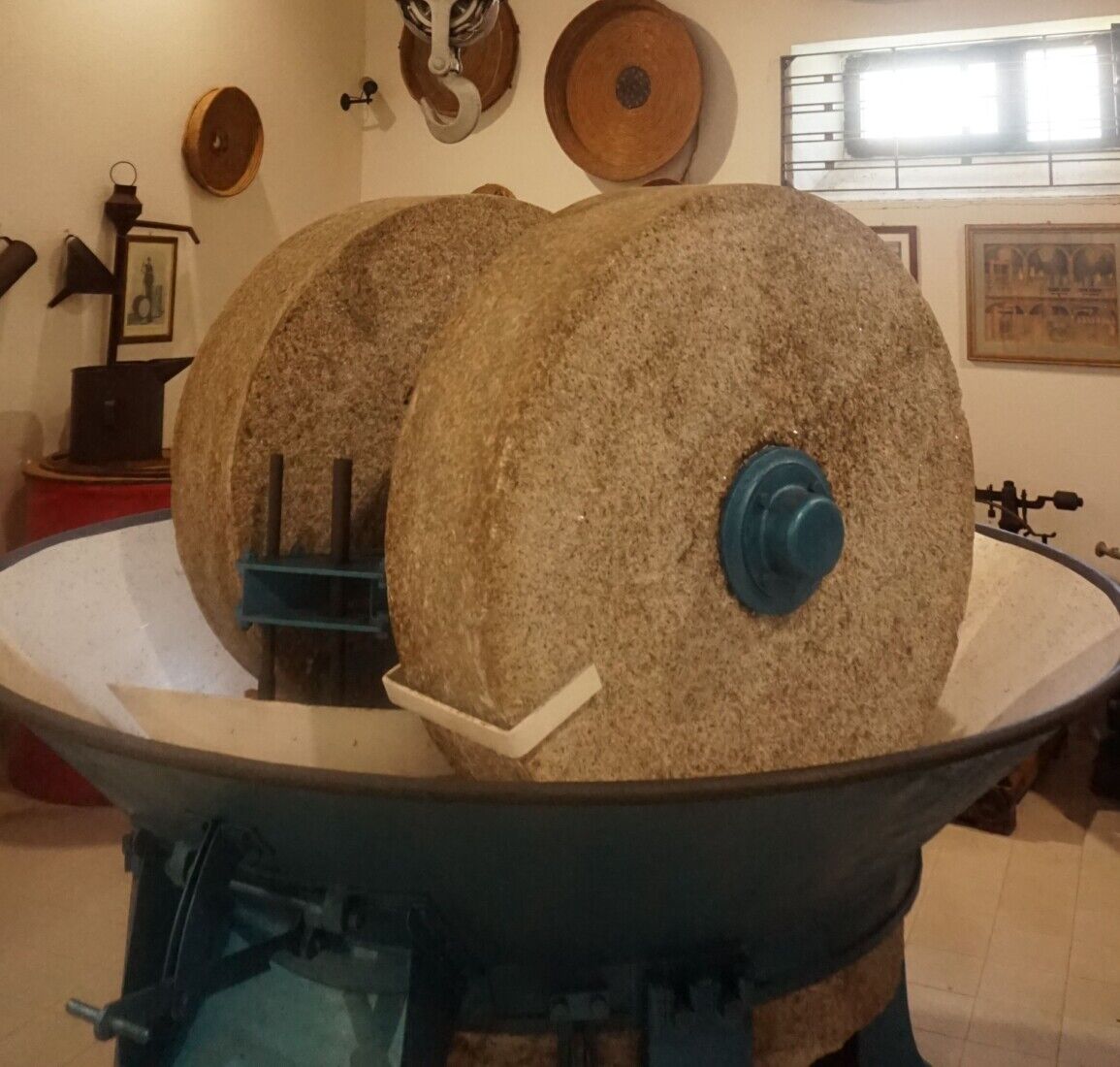


This ancient millstone, also known as a "molazza," is composed of a circular basin where olives were placed for processing. The grinding occurred thanks to a stone wheel, made of basalt in this case, though typically constructed of granite. The wheel rotated around a vertical axis made of hardwood, such as juniper, causing the liquid to be released not through crushing, but by rubbing the pits and sharp debris against the olive pulp.

To operate the millstone, an animal, such as a donkey, mule, horse, or ox, often with its eyes blindfolded, was used. The animal walked around the basin, transmitting movement to the millstone and allowing the olives to be ground. This mode of operation was typical of rural communities and the traditional imagery of grinding passed down through stories, history, and iconography.
Over the centuries, animal traction has been replaced by more modern technologies, such as the use of steel and electricity. The molazze were powered by engines that ensured greater uniformity and continuity in the process. Grinding took place for about half an hour, during which time a limited quantity of olives could be processed.
Modern steel hammer crushers allow for faster processing and higher product quality, demonstrating the evolution of technology and techniques used in olive oil production.
